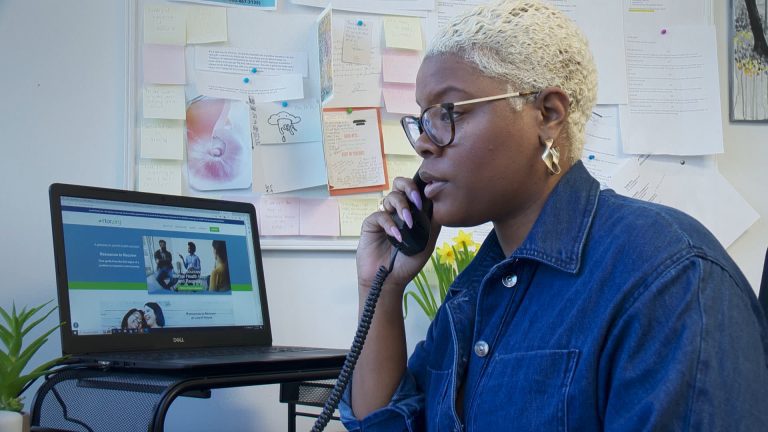Post-Traumatic Stress Disorder (PTSD) can develop after experiencing or witnessing traumatic events, such as natural disasters, violent crimes, or motor vehicle accidents. While the circumstances of these traumas may vary, the emotional and psychological effects often overlap, manifesting as anxiety, intrusive thoughts, and a sense of being stuck in the traumatic moment.
Understanding how different types of trauma can impact the mind and body is the first step toward managing PTSD. This guide outlines practical strategies for coping and recovery, including grounding techniques, therapy, legal support, and the role of community networks.
Understanding PTSD and Its Triggers
Trauma affects everyone differently, and no two experiences of PTSD are the same. However, certain types of trauma share common emotional challenges:
- Natural Disasters: Floods, wildfires, and other catastrophes can evoke feelings of helplessness and loss. Survivors may struggle with flashbacks, survivor’s guilt, or fear of recurrence.
- Crimes: Witnessing or being a victim of violence often leaves individuals feeling unsafe and hyper-vigilant, leading to trust issues and emotional withdrawal.
- Motor Vehicle Accidents: These events can create a lingering sense of vulnerability, often tied to the suddenness of the incident and its life-altering consequences.
Each type of trauma presents unique challenges, but strategies for managing PTSD often overlap, offering pathways to reclaiming stability and peace.
Grounding Techniques to Recenter the Mind
Grounding techniques are essential tools for managing PTSD symptoms, particularly during moments of heightened stress or flashbacks. These techniques anchor individuals in the present, helping to mitigate the overwhelming feelings triggered by memories of the traumatic event.
The 5-4-3-2-1 Technique
Focus on five things you can see, four things you can touch, three things you can hear, two things you can smell, and one thing you can taste. This practice draws attention away from distressing thoughts and into the immediate environment.
Breathing Exercises
Controlled breathing, such as the box breathing method (inhale for four counts, hold for four, exhale for four, hold for four), can help regulate the nervous system and reduce anxiety.
Physical Movement
Activities like yoga, stretching, or even walking barefoot on grass can provide tactile reassurance, redirecting energy from distress to the body.
Grounding is particularly effective when paired with mindfulness practices, encouraging survivors to engage with the here and now rather than reliving the trauma.
Therapy Options for Trauma Recovery
Psychotherapy is a cornerstone of PTSD treatment, offering a safe space for individuals to process their experiences and develop coping mechanisms. While the type of therapy may vary depending on the trauma, several approaches have proven effective:
Cognitive Behavioral Therapy (CBT)
This method helps identify and reframe negative thought patterns that perpetuate PTSD symptoms, replacing them with healthier, more constructive perspectives.
Eye Movement Desensitization and Reprocessing (EMDR)
EMDR focuses on reducing the emotional intensity of traumatic memories by engaging the brain in bilateral stimulation, such as following a therapist’s hand movements.
Somatic Experiencing
This therapy emphasizes the connection between mind and body, helping individuals release trauma stored in their physical being through gentle, body-centered practices.
Therapy provides an essential framework for understanding PTSD, allowing survivors to regain control over their thoughts and emotions while developing tools for long-term resilience.
Legal and Financial Compensation as a Path to Healing
For some, PTSD is compounded by the financial and legal challenges stemming from the trauma. Victims of motor vehicle accidents, natural disasters, or crimes may find relief through legal avenues that address their losses:
- Filing for Compensation: Seeking compensation for medical expenses, lost wages, or property damage can alleviate financial stress, enabling individuals to focus on recovery.
- Legal Advocacy: Navigating the legal system can feel daunting, especially when coping with PTSD. Legal professionals can provide guidance and support, ensuring that survivors’ rights are protected.
- Disaster Relief Programs: For those affected by natural disasters, local and federal aid programs often provide financial assistance, temporary housing, and other resources to help rebuild.
While financial compensation cannot undo the trauma, it can reduce stress and create a foundation for moving forward.
Building a Support Network
Community support plays a crucial role in the recovery process. Surrounding oneself with understanding individuals fosters a sense of connection, reducing isolation and reinforcing the belief that healing is possible.
- Support Groups: Joining a support group for trauma survivors can provide a sense of camaraderie and shared understanding. Hearing others’ stories and strategies can inspire hope and offer practical insights.
- Family and Friends: Reaching out to trusted loved ones and communicating needs can strengthen bonds and create a safety net for difficult times.
- Community Resources: Many communities offer PTSD-focused programs, including workshops, counseling, and group activities designed to promote healing.
A strong support network can act as a buffer against the isolation often associated with PTSD, reminding survivors that they are not alone in their journey.
Embracing Hope and Resilience
Recovering from PTSD is a gradual process that requires patience, self-compassion, and persistence. Survivors must recognize that healing does not mean forgetting the trauma but instead learning to live with it in a way that allows for growth and renewal.
By combining grounding techniques, professional therapy, legal resources, and community support, individuals with PTSD can rebuild their lives with renewed confidence and stability. No matter how challenging, each small step forward is a testament to the human capacity for resilience.
PTSD may change how one experiences the world, but it does not have to define the future. With the right strategies and support, survivors of natural disasters, crimes, and accidents can move from chaos to calm, reclaiming their sense of peace and purpose.
About the Author: Danika Kimball is a ten-year veteran of the SEO industry and is based in Boise, Idaho. Outside of work, she enjoys playing video games and advocating for individuals to overcome traumas through self-love and support systems.
Photo by Connor McManus: https://www.pexels.com/photo/road-closed-signage-on-street-13865778/
The opinions and views expressed in any guest blog post do not necessarily reflect those of www.rtor.org or its sponsor, Laurel House, Inc. The author and www.rtor.org have no affiliations with any products or services mentioned in the article or linked to therein. Guest Authors may have affiliations to products mentioned or linked to in their author bios.
Recommended for You
- The Truth about Relapse in Addiction Recovery - April 14, 2025
- The Power of Peer Support in Mental Health Recovery - April 10, 2025
- Artificial Intelligence in Anxiety Management: How AI Helps Users Cope with Anxiety Symptoms - April 3, 2025







